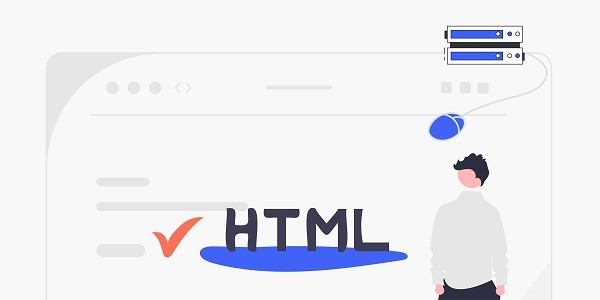This article explains the technical principles and core values of 4G proxy, explores the unique advantages of mobile network IP in data collection and privacy protection, and analyzes how IP2world empowers enterprise-level applications through diversified proxy products. The core definition and technical advantages of 4G proxyProxies 4G is a proxy service based on mobile cellular networks, which uses dynamic IP addresses assigned by operators (usually from real users' mobile devices) to forward network requests. Compared with traditional data center proxies, its core advantages are:High anonymity: The IP address is derived from a real mobile device, and the behavior characteristics are highly consistent with those of ordinary users, which can circumvent 99% of anti-crawling mechanisms;Precise geographic positioning: Based on base station signal coverage, IP location can be accurate to the city level, which is suitable for localized content collection (such as regional pricing strategy monitoring);Dynamic IP pool: A single SIM card can periodically obtain a new IP (usually changed every 5-30 minutes). IP2world's dynamic residential proxy uses this technology to build a pool of tens of millions of IP resources.For example, in the multi-account management scenario of social media, 4G proxy can assign an independent mobile IP to each account, simulate the geographical distribution and login behavior of real users, and significantly reduce the risk of account blocking. Three core scenarios for enterprises to choose 4G proxysScenario 1: Mobile Data CaptureFor data sources that rely on APP interfaces (such as TikTok and Instagram), 4G proxy can simulate the real mobile device network environment and bypass request interception based on UA (User-proxy) or IP type. IP2world's mobile proxy service supports Android/iOS device fingerprint simulation to achieve full-link mobile environment camouflage.Scenario 2: Advertising effectiveness verificationAdvertisers need to verify the localized display effect of advertising (such as regional targeting of Google Ads). By switching the target area IP through 4G proxy, they can monitor in real time whether the advertising materials are displayed according to the strategy and count the differences in CTR (click-through rate) in different regions.Scenario 3: Financial Data AggregationWhen fintech companies collect real-time market information such as stocks and foreign exchange, the high-frequency IP change capability of 4G proxies can break through the API call frequency limit of the exchange and avoid data interruptions caused by IP blocking. IP2world's static ISP proxy can also provide long-term stable IP, which is suitable for financial protocol communications that require session persistence. Key points of 4G proxy technology implementationTechnical layer 1: Base station signal simulationThe software-defined radio (SDR) technology is used to simulate base station signals and trigger the operator network to reallocate IP. IP2world's proxy nodes have built-in LTE modules and support global mainstream frequency bands (such as Band 3/7/20), ensuring seamless switching of cross-border business.Technology layer 2: IP lifecycle managementEstablish an IP health scoring model, monitor IP availability in real time (such as response delay, blocking status), and implement automatic IP resource scheduling through IP2world's API interface. When an IP is detected to trigger the risk control of the target website, the system can complete the IP replacement within 200ms.Technical layer 3: Traffic obfuscation technologyUsing TLS 1.3 encryption and traffic shaping technology, the proxy traffic characteristics are no different from those of ordinary mobile users. On this basis, IP2world's S5 proxy integrates the SOCKS5 protocol and supports application layer protocol camouflage (such as simulating HTTP/2 or WebSocket). How IP2world builds enterprise-level 4G proxy solutionsIP2world's proxy service system provides four major support modules for 4G proxys:Dynamic residential proxy: Integrates 89 million mobile IP resources worldwide, supports targeted selection by country/city/operator, and configurable IP change cycle (1 minute to 24 hours);Static ISP proxy: provides long-term stable 4G ISP IP, suitable for continuous monitoring tasks that require a fixed IP (such as price tracking of competing products);Device fingerprint library: Built-in 100,000+ mobile device fingerprints (including IMEI, MAC address, screen resolution, etc.), and cooperate with 4G proxy to achieve deep camouflage;API management platform: implements proxy configuration, usage statistics and abnormal alarms through RESTful API, and supports seamless integration with the company's existing data center.In cross-border e-commerce scenarios, sellers can collect product details from Amazon DE through IP2world's German 4G proxy, and use the US static ISP proxy to monitor independent site traffic to form cross-platform data aggregation analysis. The future evolution direction of 4G proxy5G network convergence: Using 5G slicing technology to allocate exclusive network channels for proxy services, the latency can be reduced to less than 10ms. IP2world has tested 5G-CA (carrier aggregation) technology in its exclusive data center proxy;Edge computing empowerment: Deploy lightweight proxy nodes on the base station side to implement data pre-processing (such as compression and deduplication) before transmitting it back to the central server, reducing bandwidth costs;AI-driven decision-making: Through machine learning, the risk control model of the target website is predicted and request parameters (such as click interval and scrolling speed) are dynamically adjusted. IP2world's intelligent routing engine has integrated this type of algorithm. As a professional proxy IP service provider, IP2world provides a variety of high-quality proxy IP products, including dynamic residential proxy, static ISP proxy, exclusive data center proxy, S5 proxy and unlimited servers, suitable for data collection, brand protection, advertising verification and other application scenarios. If you need to know more about the technical details of 4G proxy or test IP resources, please visit IP2world official website to get customized solutions.
2025-03-20









